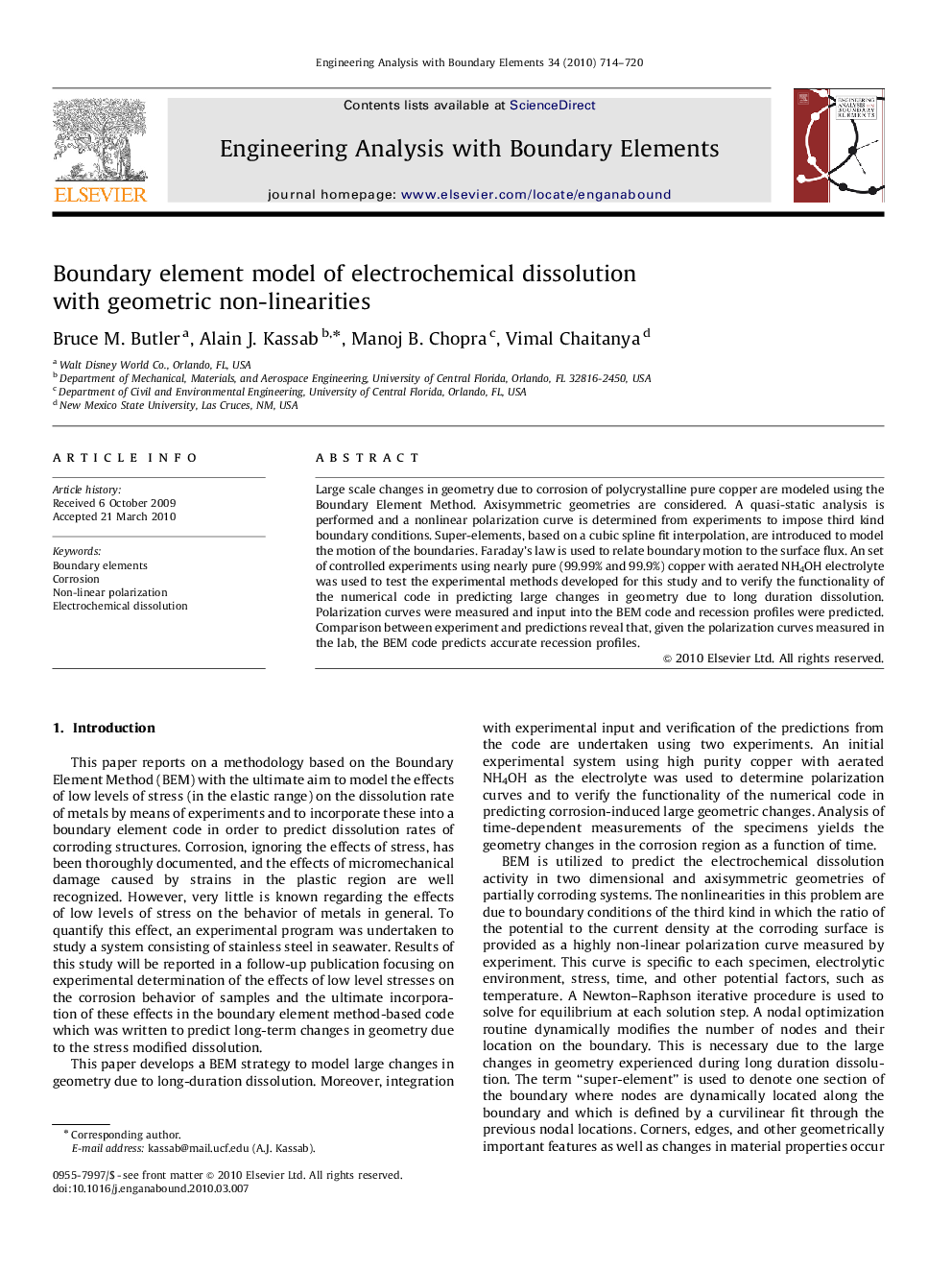| Article ID | Journal | Published Year | Pages | File Type |
|---|---|---|---|---|
| 513226 | Engineering Analysis with Boundary Elements | 2010 | 7 Pages |
Large scale changes in geometry due to corrosion of polycrystalline pure copper are modeled using the Boundary Element Method. Axisymmetric geometries are considered. A quasi-static analysis is performed and a nonlinear polarization curve is determined from experiments to impose third kind boundary conditions. Super-elements, based on a cubic spline fit interpolation, are introduced to model the motion of the boundaries. Faraday's law is used to relate boundary motion to the surface flux. An set of controlled experiments using nearly pure (99.99% and 99.9%) copper with aerated NH4OH electrolyte was used to test the experimental methods developed for this study and to verify the functionality of the numerical code in predicting large changes in geometry due to long duration dissolution. Polarization curves were measured and input into the BEM code and recession profiles were predicted. Comparison between experiment and predictions reveal that, given the polarization curves measured in the lab, the BEM code predicts accurate recession profiles.
